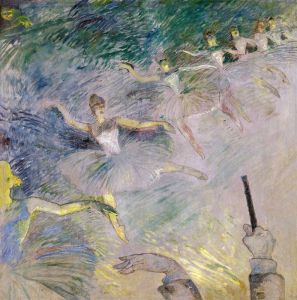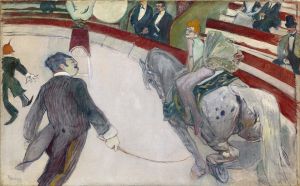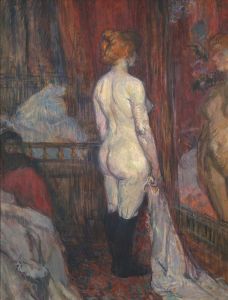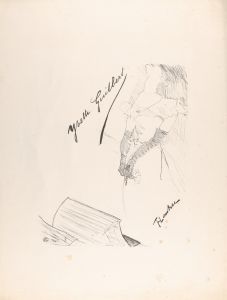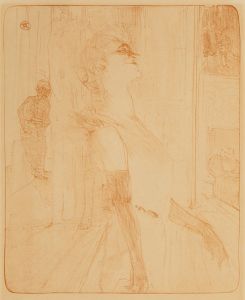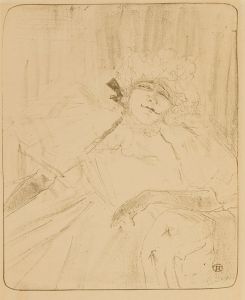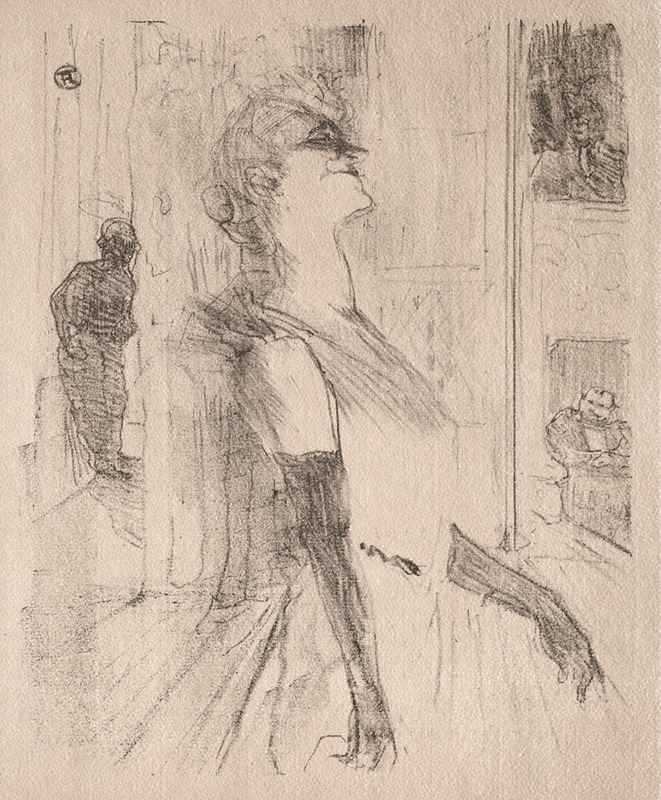
Yvette Guilbert: Sur la scène
A hand-painted replica of Henri de Toulouse-Lautrec’s masterpiece Yvette Guilbert: Sur la scène, meticulously crafted by professional artists to capture the true essence of the original. Each piece is created with museum-quality canvas and rare mineral pigments, carefully painted by experienced artists with delicate brushstrokes and rich, layered colors to perfectly recreate the texture of the original artwork. Unlike machine-printed reproductions, this hand-painted version brings the painting to life, infused with the artist’s emotions and skill in every stroke. Whether for personal collection or home decoration, it instantly elevates the artistic atmosphere of any space.
Henri de Toulouse-Lautrec, a prominent French painter and illustrator, is renowned for his depictions of Parisian nightlife in the late 19th century. One of his notable works is "Yvette Guilbert: Sur la scène," which captures the essence of the famous French cabaret singer and actress Yvette Guilbert. Toulouse-Lautrec's art is characterized by its vivid portrayal of the bohemian lifestyle and the vibrant atmosphere of the Montmartre district, where he spent much of his life.
Yvette Guilbert was a celebrated performer known for her unique style and expressive performances. Born in 1865, she rose to fame in the 1890s, becoming a star at venues such as the Moulin Rouge and the Ambassadeurs. Guilbert was recognized for her long gloves, which became her trademark, and her ability to convey deep emotion through song and gesture. Her repertoire often included satirical and risqué songs, which resonated with the audiences of the time.
Toulouse-Lautrec's relationship with Guilbert was one of mutual respect and artistic collaboration. He was captivated by her stage presence and sought to capture her essence in his artwork. "Yvette Guilbert: Sur la scène" is one of several pieces he created featuring her, showcasing his ability to depict the dynamism and charisma of performers. His works often went beyond mere portraiture, aiming to convey the personality and spirit of his subjects.
In "Yvette Guilbert: Sur la scène," Toulouse-Lautrec employs his distinctive style, characterized by bold lines and a keen sense of movement. The painting captures Guilbert mid-performance, emphasizing her expressive gestures and the theatricality of her act. Toulouse-Lautrec's use of color and line work highlights the energy of the scene, drawing the viewer into the world of the cabaret. His technique often involved lithography, a medium that allowed him to produce multiple copies of his works, thus spreading his vision of Parisian nightlife to a broader audience.
The painting is a testament to Toulouse-Lautrec's skill in capturing the zeitgeist of his era. His works provide a window into the cultural and social dynamics of fin-de-siècle Paris, a time when the city was a hub of artistic innovation and social change. Toulouse-Lautrec's depictions of performers like Guilbert not only celebrate their talents but also offer insight into the entertainment industry of the time, which was marked by a blend of glamour and grit.
Toulouse-Lautrec's art, including "Yvette Guilbert: Sur la scène," remains influential, reflecting his unique perspective on the world around him. His ability to portray the human condition with empathy and humor has cemented his place in the canon of art history. Today, his works are celebrated for their technical mastery and their ability to capture the spirit of an era that continues to fascinate audiences worldwide.
In summary, "Yvette Guilbert: Sur la scène" is a significant work by Henri de Toulouse-Lautrec that exemplifies his talent for capturing the vibrancy of Parisian nightlife and the personalities that defined it. Through his art, Toulouse-Lautrec offers a glimpse into a world that was both ephemeral and enduring, leaving a lasting impact on the art world and beyond.






